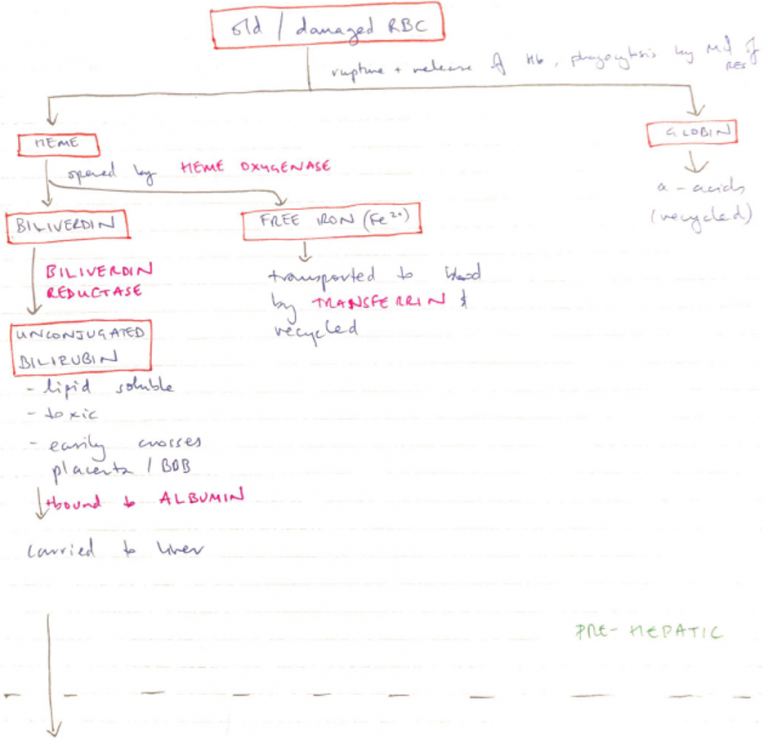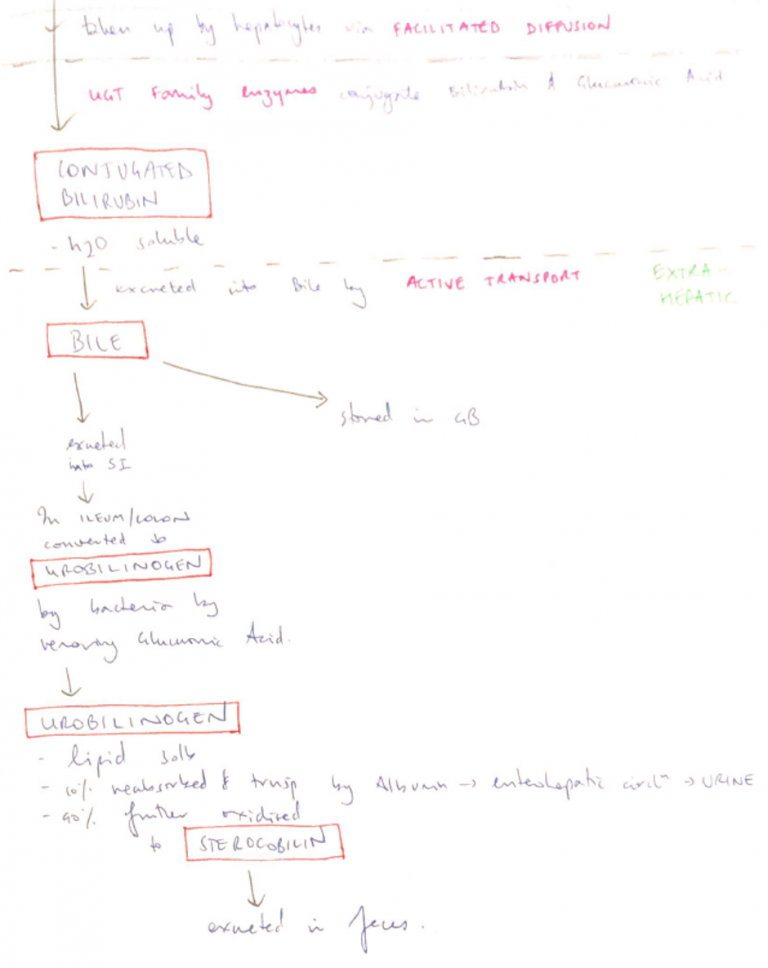Q1i / 14A11: Formation, structure, function & fate of RBC
14A11: Exam Report
Outline the formation, structure and function of the adult red blood cell.
19% of candidates passed this question.
Candidates generally provided detailed description of the cell lineage that led up to the production of the mature red blood cell (RBC), but often omitted to mention those aspects unique to the RBC that were essential to its functions (e.g. biconcave shape gives the RBC a greater surface area and shorter distance to central regions, thus optimising diffusion of gases; the RBC enhanced ability to change shape and travel through narrow capillaries; lack of organelles maximises space for Hb, etc.). Mention of RBC function often lacked detail (e.g. restricted to just mentioning “O2 carriage”) or failed to mention, and describe, the RBC’s role in acid base buffering and HCO3B production.
Q1i / 14A11: Formation, structure, function & fate of RBC
- Definition – the commonest cell in the blood
- 4-6 million RBC/microlitre
Formation
- KA Erythropoiesis
- Occurs in Bone Marrow
- Lineage:
PLUEIRPOTENT HAEMATOPOIETIC STEM CELL
↓
COLONY FORMING UNIT (CFU)
i.e. Myeloid Stem Cell
↓
COLONY FORMING UNIT ERYTHROCYTE (CFU-E)
↓
PROERYTHROBLAST (Nil Hb, nucleus)
↓
BASOPHIL ERYTHROBLAST (little Hb)
↓
POLYCHROMATOPHILIC ERYTHROBLAST (↑ Hb, ↓ nucleus size)
↓
NORMOBLAST (small dense nucleus which is ejected)
↓
RETICULOCYTE (RNA to make Hb, few mitoch., 1% of circulating RBC)
↓ diapededis (squeezes through cap pores) circulates ~2nd & loses RNA
= MATURE RBC
- As RBC develops, ↓size, ↑Hb, Nucleus disappears
- From stem cell → RBC ~10 days
- Requires folate, B12, Fe
Regulation
- Stimulated by EPO
- EPO = glycoprotein synthesised in peritubular caps of kidney (90%) & liver (10%)
- EPO circles blood stream
- Acts on EPO receptor in BM
- Differentiation & proliferation of cells into RBC
- ↓O2 delivery due to
- Anaemia
- Hmmrg
- ↑altitude
- Lung disease
- HF
Rbc Structure
- Round, biconcave disc
- Large SA for gas transfer
- Diam 7µm, width 2µm
- Notoriously deformation → allows movement through tiny caps
- Smooth contours
- Lipid bilayer, negative surface charge
- Enzymes:
- NA/K/ATPase – allows structure/maintenance
- Carbonic Anhydrase – allows CO2 + H2O ⮂ H2CO3 ⮂ H+ + HCO3–
- Anucleus, nil mitochondria
- Less E. requirements
- More room for Hb
- E via anaerobic glycolysis & pentose phosphate pathway
Hb
- Protein
- 200 – 300 million molecules Hb in each RBC
- 2 parts: heme + globin
- Heme moiety has PROTOPORPHYRIN RING & central iron in Ferrous (Fe2+) state
- 4 polypeptide chains determine type of Hb
- O2 binds reversibly to heme
- 4 hemes → ∴carries 4 x O2
- Hb is allosteric → binding O2 to 1 heme = ↑affinity for remaining O2
Function
1. To Carry Hb
- Allows Hb to remain a tetramer
- Protects protein from glomerular filtration
- Avoids ∆ plasma oncotic P
2. O2 Transport
- 1° function
- O2 binds Hb → transported to tissues
- BOHR EFFECT enhances this → ↑PCO2 / ↑H+ causes ↓affinity for O2 & offloads to tissues (because Hb is simply growing BOHR-ed of O2)
3. CO2 Transport
- Carbamino compounds → terminal groups of Hb
- HCO3– → catalysed by CA
4. Acid/Base Buffer
- H+ binds HbO2
- Conformational ∆ → release O2
5. Cl – Shift
- Carbamino compounds → terminal groups of Hb
- HCO3– → catalysed by CA
6. Immunological Role
- ABO Ags
- Author: Krisoula Zahariou

